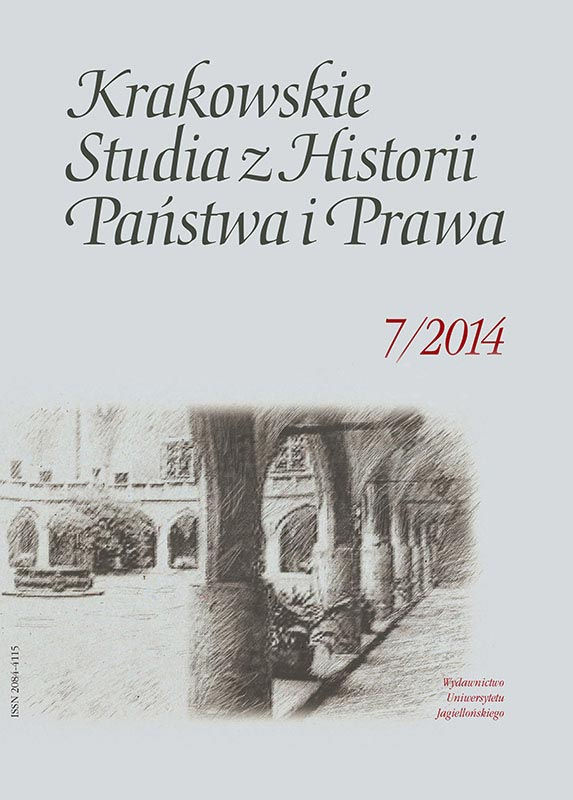Ze studiów nad rolą i miejscem łaciny prawniczej w kulturze europejskiej
From the Studies on the Role and Place of legal Latin in the European Culture
Author(s): Janusz SondelSubject(s): Law, Constitution, Jurisprudence, History of Law
Published by: Wydawnictwo Uniwersytetu Jagiellońskiego
Keywords: Legal Latin; legal culture; mediaeval Latin; Catholic Church; Wincenty Kadłubek; dictionaries; Statutes of Kazimierz Wielki; Roman Empire
Summary/Abstract: Latin, whose origins reach back to the Proto-Indo-European language, pervaded the European culture beginning with the Roman times and its influence continues until the modern era. It arose in its primal form in Latium on the Apennine Peninsula and it continued to develop together with the Roman Empire; it was subject to the influence of other cultures, particularly in the sphere of the spoken language. It was also during Roman times that literary Latin was created, but around that time another variety of Latin as spoken by the lower social classes was also born; this division exerted an immense impact on the evolution of Latin and the derivative European languages in the Middle Ages and in the modern era. Classical Latin was popularized in Europe chiefly by the Church; it functioned as a language of instruction at universities and it became the language of communication of both men of the world of learning and men of the law. In the Middle Ages Latin became rejuvenated, subjected to various modifications, including a process of regionalization. The Renaissance brought about a return to the classical variety of Latin and a desire to purify it from the accretions of the Middle Ages. Latin remained to be very much alive in the era of the Enlightenment, yet it also began to lose its significance in relation to national languages. The origins of legal Latin which initially was not only a technical language, reach back to the writings of Roman jurists. Initially legal language relied heavily on real-life social and economic relations. Yet already in ancient Rome, abstract concepts had been used in Latin and the nomenclature of legal institutions was evolving. This process continued throughout the mediaeval times. A good example of an outstanding expert on Latin in Poland was Wincenty Kadłubek. In Poland Latin had been a universal language, particularly in the sphere of the judicial system. This was combined at the same time with the progressing Latinization of the Polish legal language. Dictionaries were yet another important aspect of the functioning of Latin – in Poland they began to be published in the 14th century. Translations of legal texts into Polish, beginning with the translations of the Statutes of King Kazimierz Wielki, were also popular in mediaeval Poland. Such translations are also a common practice today – the directive which bids to use Latinized forms of technical terms, rather than their Polish translations which are often descriptive and resort to neologisms, seems to be quite justifiable. Though rarely used and hermetic, Latin seems to persist and is waiting to be rediscovered.
Journal: Krakowskie Studia z Historii Państwa i Prawa
- Issue Year: 7/2014
- Issue No: 1
- Page Range: 69-91
- Page Count: 23
- Language: Polish

